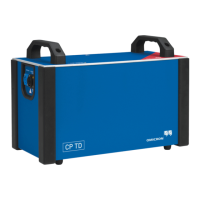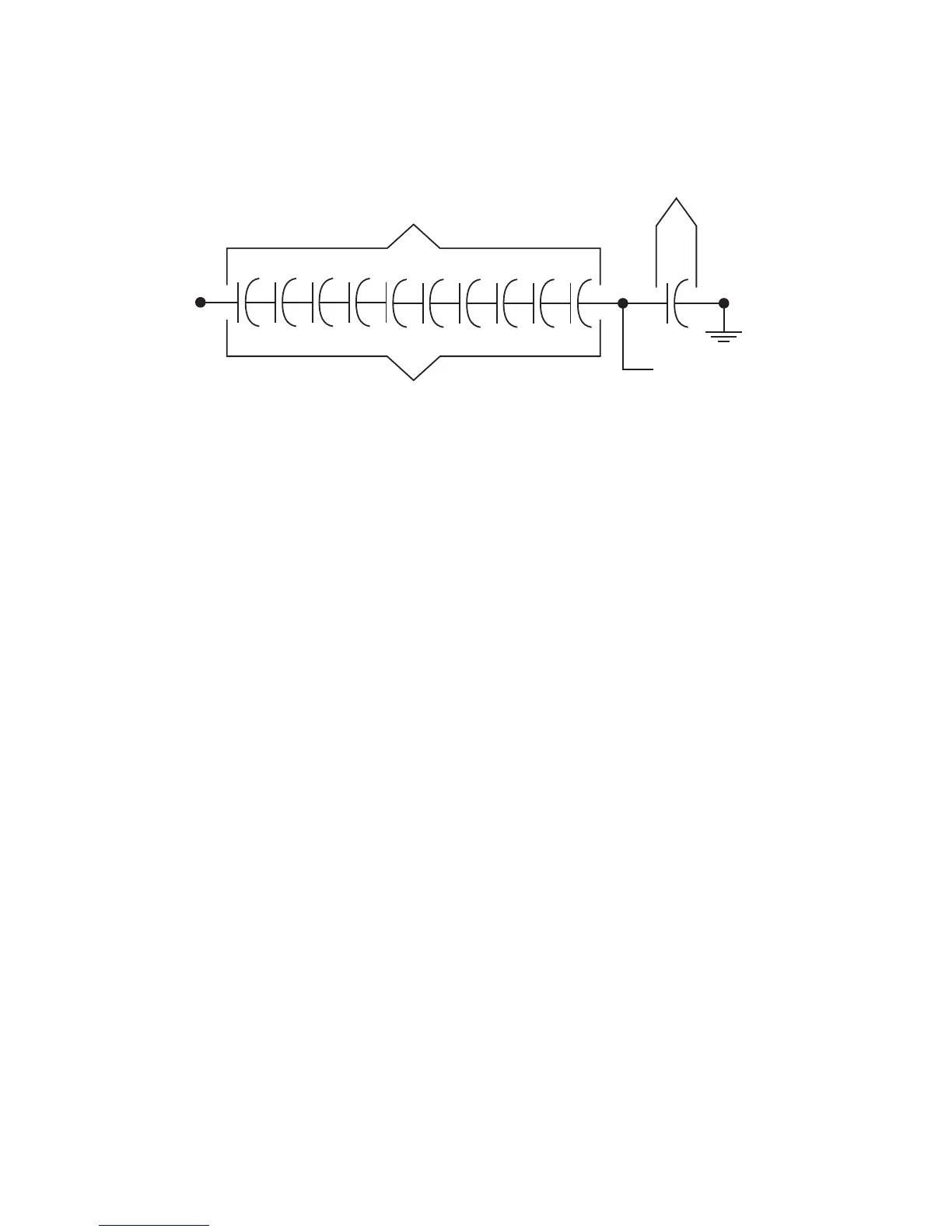CP TD1 User Manual
58 OMICRON
Figure 6-2: Condenser bushing circuit diagram
Condenser bushings may have:
• "Resin-Bonded Paper insulation (RBP)
• "Resin-Impregnated Paper insulation (RIP)
• "Oil-Impregnated Paper insulation (OIP)
6.2.2 Composite
A bushing where the insulation consists of two or more coaxial layers consisting of different insulating
materials.
6.2.3 Compound-filled
A bushing where the space between the major insulation or conductor, if no major insulation is used, and
the inside surface of a protective weather casing (usually porcelain) is filled with a compound that
contains insulating properties.
6.2.4 Dry or unfilled
A bushing consisting of a porcelain tube with no filler in the space between the shell and the conductor.
These are usually rated 25 kilovolts and below.
6.2.5 Oil-filled
A bushing where the space between the major insulation or the conductor, and the inside surface of a
protective weather casing is filled with insulating oil.
6.2.6 Oil-immersed
A bushing composed of major insulators that are totally immersed in a bath of insulating oil.
Center
conductor
Line-to-ground system voltage
Tap electrode
(normally grounded)
Grounded
layer/flange
Tap insulation
C
2
C
K
C
1
Main insulation
C
A
=C
B
=C
C
=C
D
=C
E
=C
F
=C
G
=C
H
=C
I
=C
J
V
1
=V
2
=V
3
=V
4
=V
5
=V
6
=V
7
=V
8
=V
9
=V
10
Note: For bushings with potential taps, the C
2
capacitance is much greater than C
1
. For bushings with power-factor tap, C
1
and
C
2
capacitances may be same order of magnitude.

